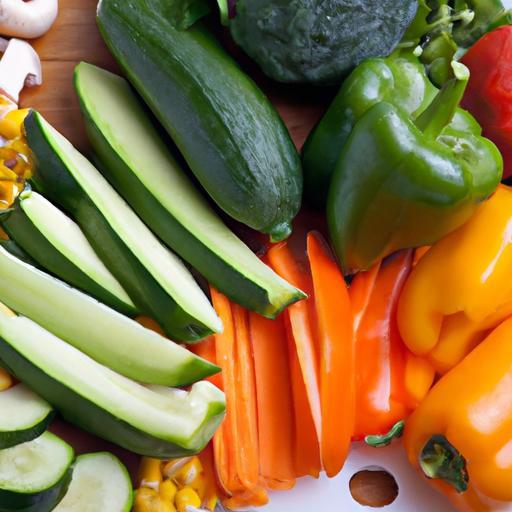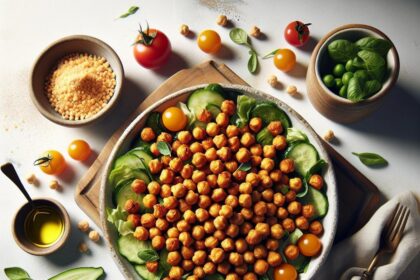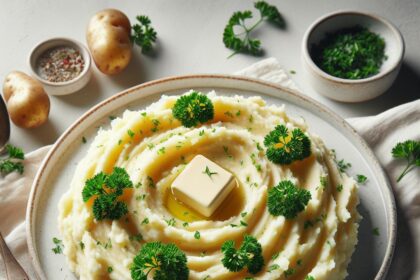There’s nothing quite like the vibrant crunch of freshly cut vegetables-those vivid bursts of color and crisp textures that elevate every meal. But once you slice, dice, or julienne your garden-fresh bounty, how do you keep that just-cut goodness from wilting, sogging, or turning limp? Welcome to the art and science of storing cut vegetables the right way. In this guide, we’ll uncover fresh and crisp secrets to extend the life of your sliced produce, helping you lock in flavor, texture, and nutrition-so every bite tastes like it was just plucked from the garden. Get ready to transform your veggie prep routine with top tips that keep your cut vegetables happily fresh and irresistibly crisp!
Fresh & Crisp: Top Tips for Storing Cut Vegetables Right
Mastering the art of keeping veggies vibrant and crunchy starts with fresh & crisp storage techniques. Nothing beats the satisfaction of biting into perfectly preserved, crisp vegetables days after they’ve been prepped. From picking the right containers to understanding moisture control, these savvy methods will keep your cut vegetables tasting garden-fresh longer than you ever imagined.
Prep and Cook Time
Prep: 10 minutes
Cook: Not applicable (storage focused)
Yield
Sufficient for storing up to 5 servings of assorted cut vegetables
Difficulty Level
Easy – No cooking involved; just smart storage practices!
Ingredients
- Glass or BPA-free plastic containers with airtight lids (various sizes)
- Paper towels or clean kitchen towels for moisture absorption
- Perforated produce bags or specially designed vegetable storage bags
- Cut vegetables such as carrots, celery, bell peppers, cucumbers, broccoli, and leafy greens
- Water for misting leafy veggies
- Refrigerator with organized vegetable zones (crisper drawers, humidity controls)
Instructions
- Choose the right container: Opt for glass containers with tight-fitting lids for a non-reactive, odor-resistant environment. BPA-free plastic containers with adjustable vents are great alternatives, allowing airflow and reducing sogginess. Avoid flimsy plastic bags that trap moisture, promoting rot.
- Master moisture control: Line the bottom of your containers with paper towels to absorb excess moisture that could accelerate spoilage. For leafy greens, lightly mist with water before sealing to maintain crispness without sogginess.
- Store wisely by vegetable type: Use your refrigerator’s crisper drawer to your advantage. Vegetables like carrots and celery thrive in high-humidity zones, whereas peppers and mushrooms prefer low humidity. Separate ethylene-producing vegetables (like tomatoes) from ethylene-sensitive ones (like broccoli) to prevent premature aging.
- Keep it organized: Store cut vegetables in containers that are clearly labeled with the date they were cut. This helps you track freshness and use produce before it wilts or spoils.
- Timing is everything: Most cut vegetables stay fresh for 3 to 5 days when stored properly. Leafy greens and softer vegetables generally last closer to 3 days, while firmer veggies like carrots and celery may persist up to a week. Always inspect visually and smell for any signs of spoilage before use.
Tips for Success
- Rotate paper towels every 1-2 days to maintain optimal moisture control and avoid sogginess.
- Use separate containers for vegetables with strong odors to prevent flavor transfer.
- If you notice condensation inside your container, briefly open it to air out excess humidity.
- For pre-cut broccoli or cauliflower, try blanching before storage to prolong crisp texture.
- Invest in clear containers – the visibility helps prevent forgotten produce languishing at the back of the fridge.
Serving Suggestions
Fresh & crisp cut vegetables are perfect for quick snacking, colorful crudité platters with your favorite dips, or as vibrant add-ins to salads and stir-fries. Garnish with a sprinkle of flaked sea salt or a dusting of fresh herbs like dill or parsley for extra flair. Keep a batch prepped in clear containers to snack guilt-free or whip up last-minute dishes bursting with garden-fresh flavor.

| Vegetable | Ideal Storage Zone | Humidity Level | Freshness Duration (days) |
|---|---|---|---|
| Carrots | High humidity drawer | 80-90% | 7 |
| Bell Peppers | Low humidity drawer | 65-70% | 4-5 |
| Leafy Greens (lettuce, spinach) | High humidity drawer, misted | 90-95% | 3 |
| Broccoli | High humidity drawer | 90% | 5 |
For more insights on maximizing vegetable freshness, visit our article on Best Ways to Store Vegetables at Home. Explore expert tips from the USDA on Food Storage for in-depth guidance on produce longevity.
Q&A
Q&A: Fresh & Crisp – Top Tips for Storing Cut Vegetables Right
Q1: Why do my cut vegetables go limp or soggy so quickly?
A1: When vegetables lose their crispness, it’s often due to moisture loss and exposure to air. Once cut, the vegetable’s natural barriers break down, causing them to dehydrate or, conversely, absorb excess moisture. This imbalance leads to limp, soggy textures. Proper storage slows down this process by maintaining the right humidity level and limiting air exposure.
Q2: What’s the magic trick to keeping cut veggies fresh and crunchy?
A2: Think of your cut veggies as guests at a spa retreat-they love a refreshing mist, a cozy blanket, and a calm environment. Store them in an airtight container or a resealable bag lined with a damp paper towel to maintain humidity. Keep them chilled in the crisper drawer where temperature and moisture are just right for longevity.
Q3: Are all vegetables stored the same way after cutting?
A3: Not quite! Different veggies have different needs. For instance, carrots and celery love a bit of water to stay snapping, so storing them submerged or wrapped in a damp towel works wonders. Leafy greens are best wrapped loosely in paper towels to soak up excess moisture and kept in breathable bags. Meanwhile, ethylene-producing veggies like tomatoes should be stored separately, as they can hasten spoilage.
Q4: Can I store cut vegetables together in one container?
A4: It’s best to avoid a veggie party in one container unless their storage needs align. Mixing high-moisture veggies with drier ones can cause condensation and mold. Plus, certain veggies emit ethylene gas which speeds ripening and decay-so, keep those tomatoes, cucumbers, and peppers on separate “tables” in the fridge.
Q5: How long can I expect cut vegetables to stay fresh if stored right?
A5: Most cut vegetables keep their crispness and flavor for 3 to 7 days with proper storage. Hardier veggies like carrots, celery, and bell peppers lean toward the longer side, while delicate greens and herbs might last just a few days. Always trust your senses-if they smell off or slimy, it’s time to let them go.
Q6: Any unusual hacks to extend the life of cut vegetables?
A6: Absolutely! For super crispy cucumbers and carrots, try storing them in a bowl of ice water for 20-30 minutes before refrigerating. For leafy greens, add a splash of vinegar to the rinse water to curb bacterial growth. And don’t underestimate the power of vacuum-sealing-removing air can dramatically prolong freshness.
Q7: Should I wash vegetables before or after cutting?
A7: Wash them before cutting to avoid spreading dirt and bacteria across freshly exposed surfaces. Use cold water and gently scrub soft skins. Let them dry thoroughly or pat with paper towels before storing to prevent excess moisture buildup that promotes spoilage.
Q8: How does cutting size affect vegetable freshness?
A8: Smaller or thinner cuts increase surface area, speeding moisture loss and nutrient degradation. Chunkier pieces usually last longer because less inner tissue is exposed. So if you’re prepping for the week, slice veggies according to when you’ll use them-larger chunks for storage, smaller when ready to cook or munch!
Embrace these tips to keep your cut vegetables fresh, crisp, and ready for every salad, stir-fry, and snack attack. Your fridge-and your taste buds-will thank you!
In Summary
In the end, mastering the art of storing cut vegetables isn’t just about prolonging their shelf life-it’s about preserving that vibrant crunch and garden-fresh flavor that makes every bite a delight. With these top tips in your culinary toolkit, you’ll transform your kitchen into a haven of freshness, where vegetables stay crisp, colorful, and ready to elevate any meal. So, next time you prep your produce, remember: a little care goes a long way in keeping your veggies as fresh and inviting as the day they were picked. Here’s to crispness that lasts and flavors that sing!








